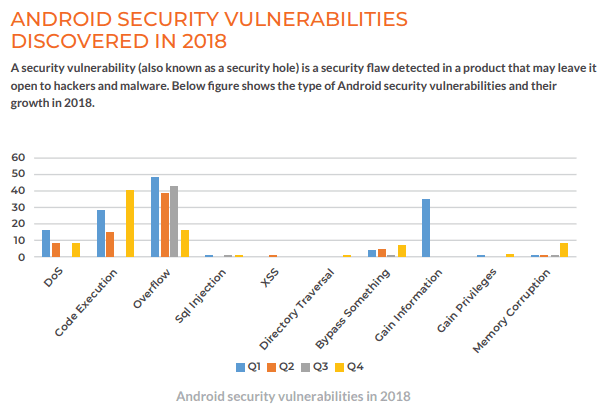With the consequent rise in the use of smartphones and mobile applications, cyber-attacks on mobiles are also increasing constantly. The risks of cyber-attacks on Android OS are costing users sensitive data and money. In 2018, over 3 million malware were detected on Android OS and the landscape is expected to continuously rise this year, as per a report by Quick Heal Security Labs.

Despite the rapid rise in cyberattacks on mobile devices, the owners aren’t investing on security practices, says cyber security experts.
“There will be a significant rise in the number of mobile-focused malware and banking trojans. Another major mobile-based threat expected to gain prominence is the introduction of malicious code into clean owned applications post update. This is most likely to take place once the download count has hit a significant landmark on the Google Play Store,” according to Quick Heal’s Annual Threat Report 2019.
In 2019 Android test, AV-Comparatives performed a test to check the efficiency of Android antivirus apps from the Google Play Store. They tested 250 Android Anti-Virus apps out of which more than two thirds failed to achieve a block rate of even 30 percent. Only less than 1 in 10 of the apps tested could defend all the 2,000 malicious apps.
This shows that while there are many cheap and free antivirus apps accessible in the market, only a few of those provide powerful protection against cyber threats. Consequently, before a consumer decides on to install an AV app, it is essential to at least validate its effectiveness.

Top Android Maware of 2018
Throughout 2018, Android.Agent.GEN14722 was in the top 10 android malware list, with nearly 0.1 million detections in 2018. Android.Agent.A1a92 and Android.Gmobi.A remained the most prevalent malware impacting mobile devices worldwide.

Trends in android security threats
- Use of social media accounts for malicious purpose.
- Applications on Google Play Store that hide themselves after installation. The main purpose is to display full-screen ads to users and earn revenue.
- FakeApp trick to increase the number of sponsored app download counts and reviews.
- PDF attachments sent via phishing emails to launch malware on device.
ALSO READ: Sophisticated spyware attack on WhatsApp hacks mobile phones of users
It is important to use the right anti-malware for the android mobile devices as these has a camera, speaker and a location tracker that quickly collects data from every place the consumer goes. The problem is the users are not aware about antivirus.
The best solution to this is to invest on the AV apps that come from genuine security vendors, who regularly release the updated versions to protect the users from the latest threats.
For full report and detailed statistics, click here.








